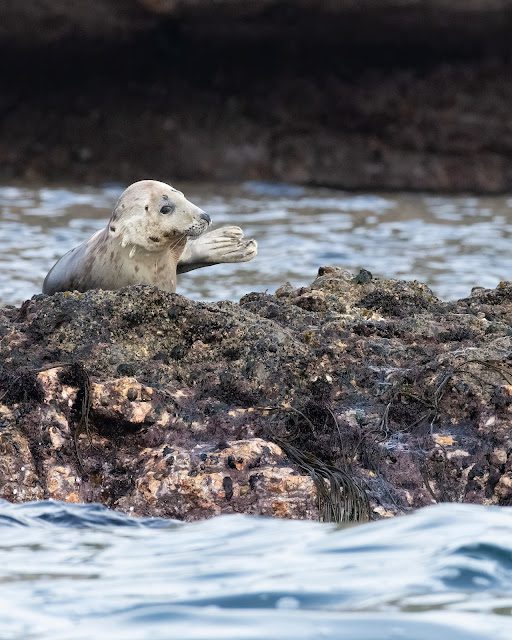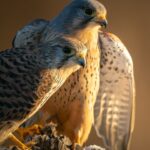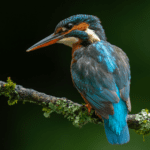
The grey seals of St.Ives, Cornwall
Grey Seal (Halichoerus grypus) GB population 120,000
Length 2.6 metres (adult) Weight 300kg (males), 200kg (females) Lifespan 25-30 years
In this blog, my guest author is John Lindsey, a Wildlife photographer from Bolton in Lancashire. John wanted to share his trip to St.Ives in Cornwall to photograph the grey seals.
Larger of the two UK seal species, the grey seal is often seen resting on rocks after feeding out at sea all day. Visibly different to the common seal by its larger size, their nostrils are parallel, rather than V shaped nostrils like on the common seals and they’re mainly grey, with unique blotches and spots that can identify individuals.
In the early 20th century grey seal numbers dropped to only 500, but now there’s an estimated 140,000 grey seals that live on the coasts of Britain, making up 40% of the world’s population.
For more information on Seals and projects to help promote knowledge and understanding of these wonderful animals go to The Seal Conservation Society

Even before I started my journey into wildlife and nature photography, I have always had a keen interest in the natural world and the many amazing creatures that live in it. From the tiniest mini beasts to stunningly beautiful birds of prey and everything in between.
One animal that has always especially interested me is the Grey Seal and in my adult life, as I got into photography, I have held them top of my UK Wildlife bucket list to go and photograph. You can find The Grey Seals in Scotland, the Norfolk Coast and down on the South Coast in the biggest colonies.


This year in 2022, I decided to combine a family Holiday with a photography trip to visit the grey seals that ‘haul out’ to rest on the rocks of St.Ives in Cornwall.
I booked the boat for me and my family to Godrevy’s Lighthouse and the surrounding rocks with St.Ives Boat Services. It’s a 1.5 hour trip around the lighthouse and it allows you to get really close to the seals, creating some great portrait or close up opportunities. The staff on the boat were full of fascinating information and interesting facts that my children loved too.
I didn’t know what to expect from the trip so was unsure which compositions or angles I could try, and which settings I would need. I did however know my time around the lighthouse was going to be limited so I wanted to make sure I was as best prepared as I could be in order for me to capture these stunning animals in their natural environment. One of the elements I had not experienced before was taking images from a moving boat in open choppy water. This was a real challenge but a very exciting one too. If really gives you a sense of being out in the wild with these grey seals.
I would definitely recommend you have a good camera strap around your neck for your camera, big waves can hit the boat completely out of the blue!

As part of this blog post I wanted to not only share my experience but also what gear and settings I used, because like I said, I had no idea what to expect at first and couldn’t find anyone else sharing settings for the same trip to help me.
Hopefully this will help you before you head out into the field (or ocean!), pardon the pun! Firstly, I want to run you through the gear I was using on the day. Those of you who regularly follow my work on social media will know I have recently jumped from Canon to Nikon.


Camera Equipment
I use a full frame Nikon D850, coupled with the Nikon Nikkor 200-500 f5.6 EG VR for my wildlife and nature photography. I love this combination and the images it gives me.
Settings
There are various ways and settings to achieve the same outcome but in this real-life scenario this is my preferred method. Some photographers will do it differently and that’s absolutely fine. I think it is always worth using the settings and gear that is most comfortable and easy to use for yourself, especially in environment you’re not used to, it’s not the time to try out new techniques or settings.
I was shooting in handheld, aperture priority mode (A) which means I can control the depth of field to my taste and how I want the images to look, while the camera works out the shutter speed. I kept my ISO quite high at ISO 2500 due to the large amount of movement from the boat and the seals.
I find this setting the most convenient for an ever changing scene, where I had to shoot fast before the boat passes the seals, the seals dived off the rocks, or the sun went behind the clouds. I want to make sure that my camera would give a fast enough shutter speed to freeze any action and producing sharp images. I shoot in RAW but I like to have the white balance set on ‘cloudy’, and I’ll colour correct if needed back in the office when I do my post-production editing.

In terms of post-production as I said I always shoot Raw, and I edit all my images in Adobe Photoshop, and I also use two plug ins which are Topaz Sharpen AI and Topaz De-Noise AI. These two programs I could not be without. They have allowed to me go out more when the light isn’t as good as I want and use higher ISO’s. I honestly feel I achieve much more “Keeper” images using them both.
I hope this blog helps you, or maybe inspires you to take the same trip out to see the seals. I had a great time, so did my family and I managed to tick the top spot off my wildlife bucket list. If you do go, share your images with me on social media. If you have anything to add or ask me, use the comments section below . Thanks for reading!


You may also like
Where to photograph Atlantic Puffins in the UK
The Mighty Drummer of the UK Woodland: Discovering the Great Spotted Woodpecker
Chasing Fire and Feathers – Photographing the Firecrest in Surrey
Featured Posts


GET SOCIAL
INSTAGRAM
@snowboard.paul
@macro.paul
TWITTER
@paul__browning_
FACEBOOK
@snowboardpaul
@macro.paul.surrey
Get in Touch
GET SOCIAL
INSTAGRAM
@snowboard.paul
@macro.paul
TWITTER
@paul__browning_
FACEBOOK
@snowboardpaul
@macro.paul.surrey













Leave a Reply